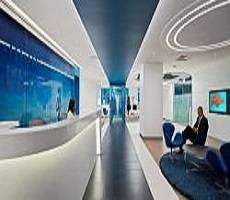May 3, 2013
What workers really want from their offices? The basics.
 So what do people really want from their offices? It’s a question that has tasked the minds of researchers for many years. According to a recent survey from Overbury, the ideal office design seemed to be a Starbucks, but a new report from the British Council for Offices suggests that what people want isn’t actually that much. Top of the list of priorities for the 1,200 or so people surveyed were fast Wi-Fi, comfortable surroundings, a convenient location and a decent, if unspectacular, fit-out, although responses varied to a certain degree across age groups and sectors. Is that really too much to ask? And are the pool table and the slide absolutely necessary?
So what do people really want from their offices? It’s a question that has tasked the minds of researchers for many years. According to a recent survey from Overbury, the ideal office design seemed to be a Starbucks, but a new report from the British Council for Offices suggests that what people want isn’t actually that much. Top of the list of priorities for the 1,200 or so people surveyed were fast Wi-Fi, comfortable surroundings, a convenient location and a decent, if unspectacular, fit-out, although responses varied to a certain degree across age groups and sectors. Is that really too much to ask? And are the pool table and the slide absolutely necessary?
























May 10, 2013
The biggest challenge is building flexibility into an office design
by Mark Eltringham • Comment, Facilities management, Workplace design
More →